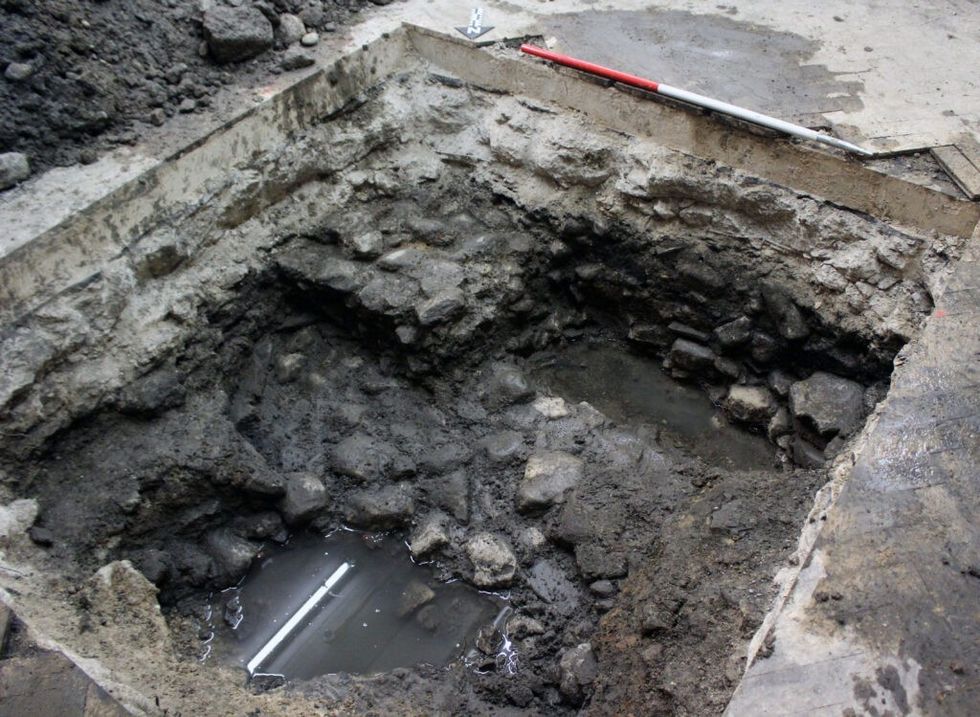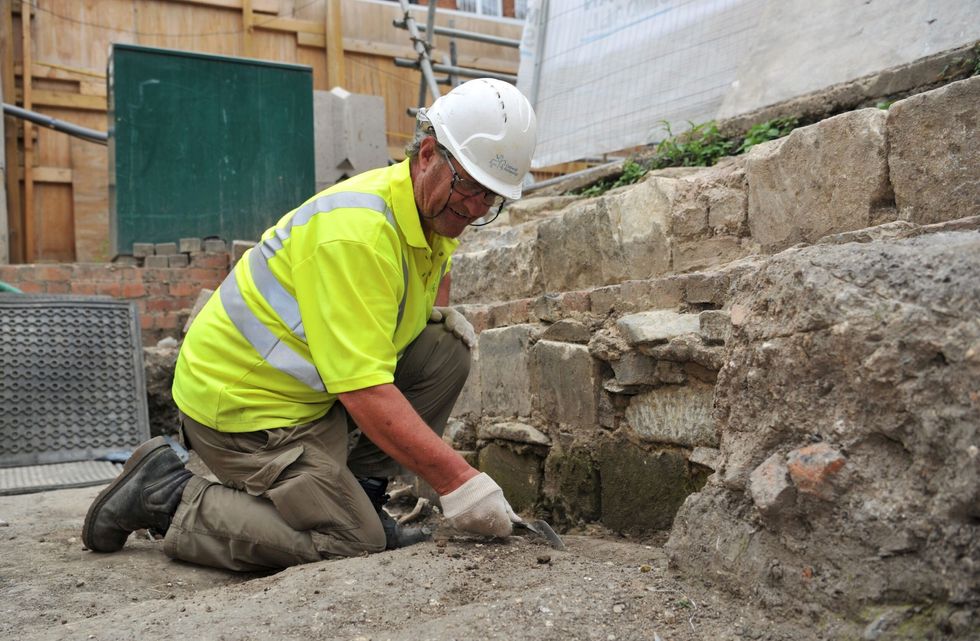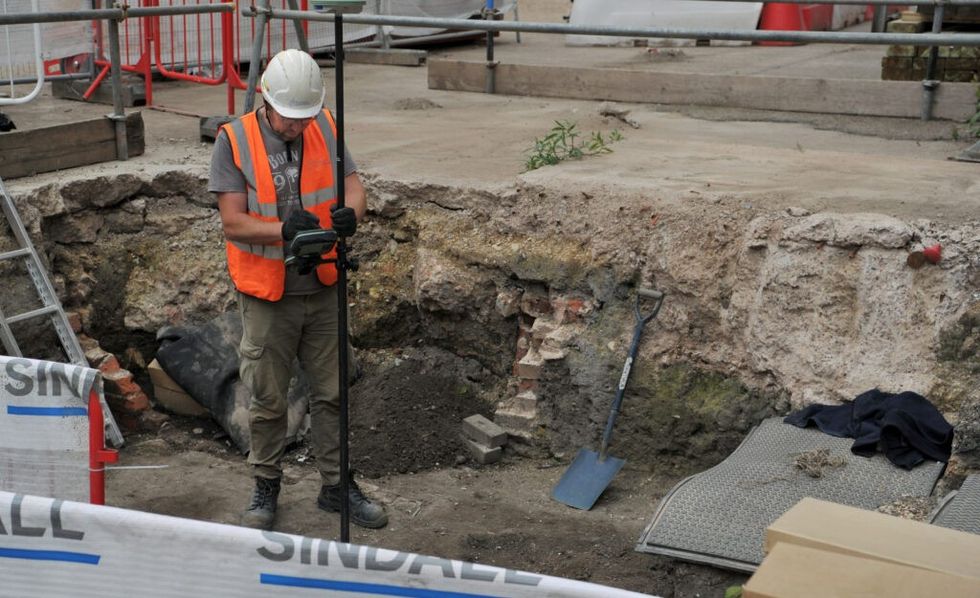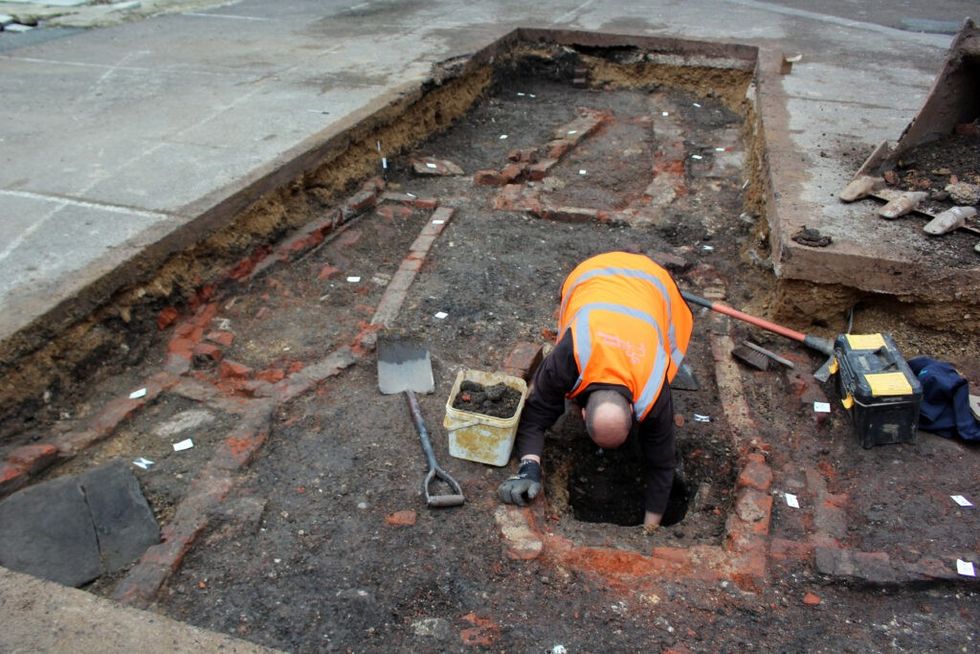Archaeology breakthrough as researchers uncover hundreds of skeletons in centuries-old grave site beneath a Debenhams
In the basement, where the menswear section used to be, researchers also found a second-century Roman road surface
Don't Miss
Most Read
Trending on GB News
Archaeologists have uncovered the remains of an 18th century church and more than 300 skeletons beneath a former Debenhams store in Gloucester.
The centuries-old discoveries were made during redevelopment work at the site, which is being transformed into the University of Gloucestershire's City Campus.
Experts say the area used to be the north-eastern quadrant of a Roman town, with remains discovered in brick-built vaults and a crypt.
The biggest discovery was an eight-metre-long footing of the Western elevation and porch from St Aldate's Church, built around 1750.

A cobbled Roman street surface or yard was discovered in a test pit inside the Debenhams building
UNIVERSITY OF GLOUCESTERSHIRE/COTSWOLD ARCHAEOLOGY
Researchers believe it was named after a bishop of Gloucester who died in battle in 577.
The post-medieval church replaced a medieval structure that may have pre-dated the Norman Conquest.
Historians largely agree the medieval St Aldate's Church was destroyed in the mid-17th century after sustaining damage during the English Civil War.
In the building's basement, where the menswear department used to be, archaeologists discovered Roman pottery and a cobbled stone surface dating back to the second century.
Substantial fragments of a reticulated tracery church window were also unearthed, dating to the early 14th century.
MORE ARCHAEOLOGY BREAKTHROUGHS:

Cliff Bateman, Cotswold Archaeology's senior project officer, pictured digging at the City Campus site
UNIVERSITY OF GLOUCESTERSHIRE/COTSWOLD ARCHAEOLOGY

The centuries-old discoveries were made during redevelopment work at the site, which is being transformed into the University of Gloucestershire's City Campus
UNIVERSITY OF GLOUCESTERSHIRE/COTSWOLD ARCHAEOLOGY
Other interesting finds included pillars from the 1700s in the abandoned Debenhams delivery area, parts of a tobacco pipe and a post-Medieval wine bottle.
Cliff Bateman, Cotswold Archaeology's senior project officer at the City Campus site, said: "The site as a whole has the potential to increase public knowledge of the Roman, medieval and post-medieval development of this part of Gloucester."
"Gloucester is such a significant place in terms of archaeological study - it's unbelievable. Underneath where we've found the 18th century church and medieval and post-medieval burials, there will be Roman buildings in situ."
"Every time we work in Gloucester, we make new discoveries - it's a massively important place."
The footing discovered is only 20cm to 30cm below the current ground surface and has survived remarkably well.
STUNNING FINDS ON BRITAIN'S SHORES - READ MORE:

Cotswold Archaeology's Noel Boothroyd excavates burial vaults at the Gloucester site
UNIVERSITY OF GLOUCESTERSHIRE/COTSWOLD ARCHAEOLOGY
"It's an interesting discovery in that, although the post-medieval St Aldate's Church was built in the mid-18th century, photographs taken in later years very clearly show that it was brick church, almost neoclassical in its design," explained Bateman.
The footing is made of well-dressed limestone blocks, possibly repurposed from the earlier medieval church.
The University commissioned Cotswold Archaeology to carry out the excavation as an essential part of the planning process for the new City Campus development.
Within the same location, archaeologists discovered 12 burials, most associated with the medieval St Aldate's Church.
All remains are being sensitively transferred for historical analysis before being reinterred.








